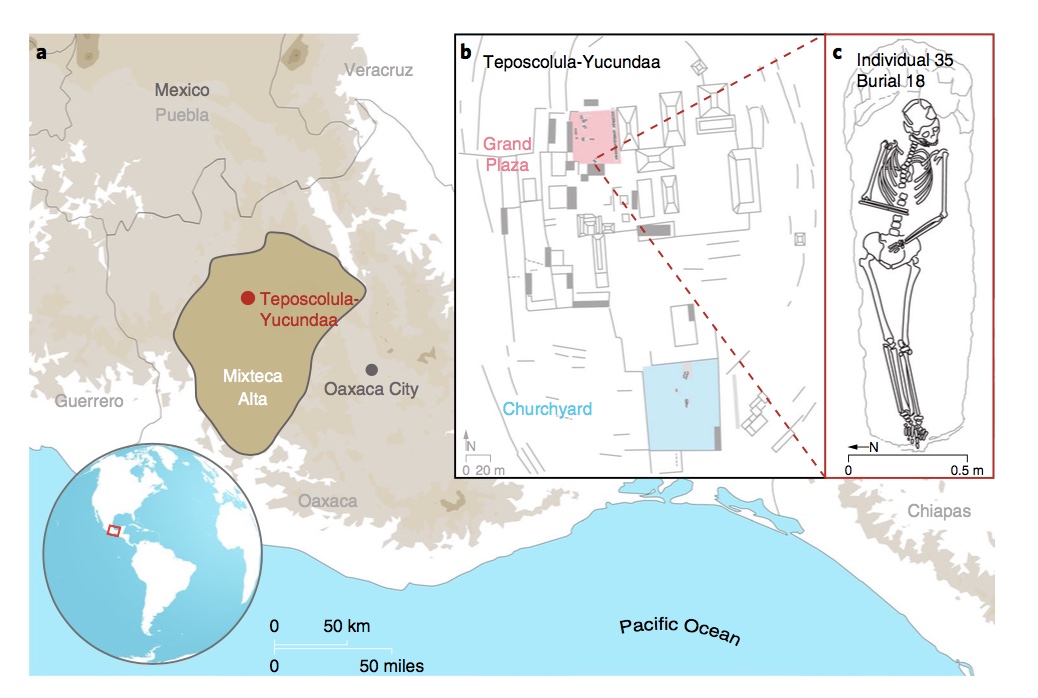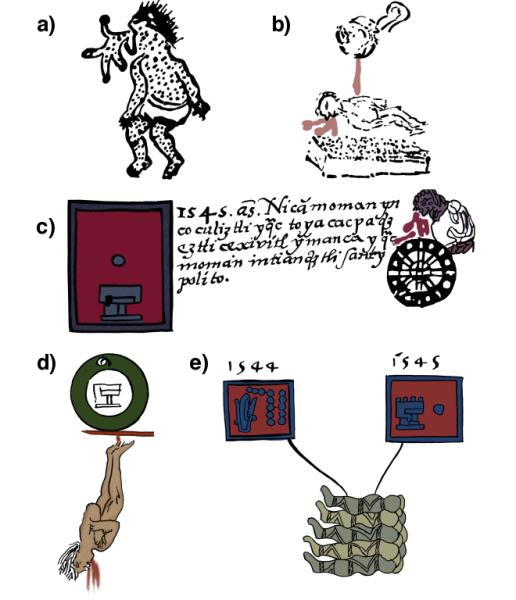Newly developed genomic sequencing techniques have the power not only to drive our future, but also to reconstruct our past.
Recently, a research team out of the Max Planck Institute for the Science of Human History in Germany has solved part of a mystery that has been around for centuries. That is, what was responsible for a major epidemic that occurred between AD 1545-1550 and was called ‘huey cocoliztli’ in Nahuatl, which translates to ‘great pestilence’. This name is used to describe the event that resulted in millions of deaths (80% of the human population) in Teposcolula-Yucundaa, Oaxaca in southern Mexico
Because the cause of deaths has remained a mystery, it is also the subject of large speculation, with multiple different existing hypotheses on the pathogenic causes of the cocoliztli epidemic.
The authors focused their work on a smaller Mixtec population (as opposed to a Central Mexican Aztec population) to uncover what may have been one of the causes of the deaths. They collected twenty-four teeth from individuals buried in the Grand Plaza cemetery and five from individuals buried in the churchyard cemetery - the only known cemetery linked (based on historical and archaeological evidence) to the cocoliztli epidemic. They then extracted DNA from the pulp chamber of the teeth.

The epidemic cemetery that is the focus of our study is located in the pueblo viejo(“old town”) of Teposcolula-Yucundaa, which is situated in the Mixteca Alta region of Oaxaca in southern Mexico
Then, they analyzed the DNA taken from the teeth using their newly designed genomic alignment tool called the MEGAN alignment tool (MALT), a new metagenomic analysis tool that performs fast alignment and analysis of metagenomic DNA sequencing data. Using this sequencing tool, the researchers were able to identify Salmonella enterica subsp. enterica serovar Paratyphi C DNA in the sequence data generated from this archaeological material.
In true fashion, the media took this story and really ran with it, with headlines suggesting that scientists have discovered what killed the Aztecs. But, identifying bacterial DNA sequence in some teeth does not exactly result in a closed case for 15 million deaths. The authors were the first to see the overblown media hype and did something about it. In a rare, and admirable move, they addressed it head on in an article entitled "Mixtecs, Aztecs and the great cocoliztli epidemic of AD 1545-1550" where they "clarify several points made in the popular press."
They state that while they "appreciate the media coverage our work has received... we wish to clarify two points widely mentioned that are contrary to our research design and conclusions."
- Our analysis has focused on a Mixtec population as opposed to a Central Mexican Aztec population.
- We believe enteric fever should be considered a candidate for the 1545 cocoliztli epidemic, but we do not assert that it was the definitive or sole cause.
So, can we conclude that Salmonella killed millions of Aztecs? Not yet. However, what we can say, through this work that is a groundbreaking for both science and history, is that S. enterica Paratyphi C, a known cause of enteric fever in humans, was present in people who died during the cocoliztli epidemic and were buried in areas that were associated with the epidemic.
This information will add to the discussion as to what was the cause of the epidemic. Since most of the evidence, to date, has been based on modern medical interpretations of the documented symptoms, sequence data from bacteria make a relevant and important addition.
Source: Åshild J. Vågene Salmonella enterica genomes from victims of a major sixteenth-century epidemic in Mexico Nature Ecology & Evolution volume 2, pages 520–528 (2018) doi:10.1038/s41559-017-0446-6




